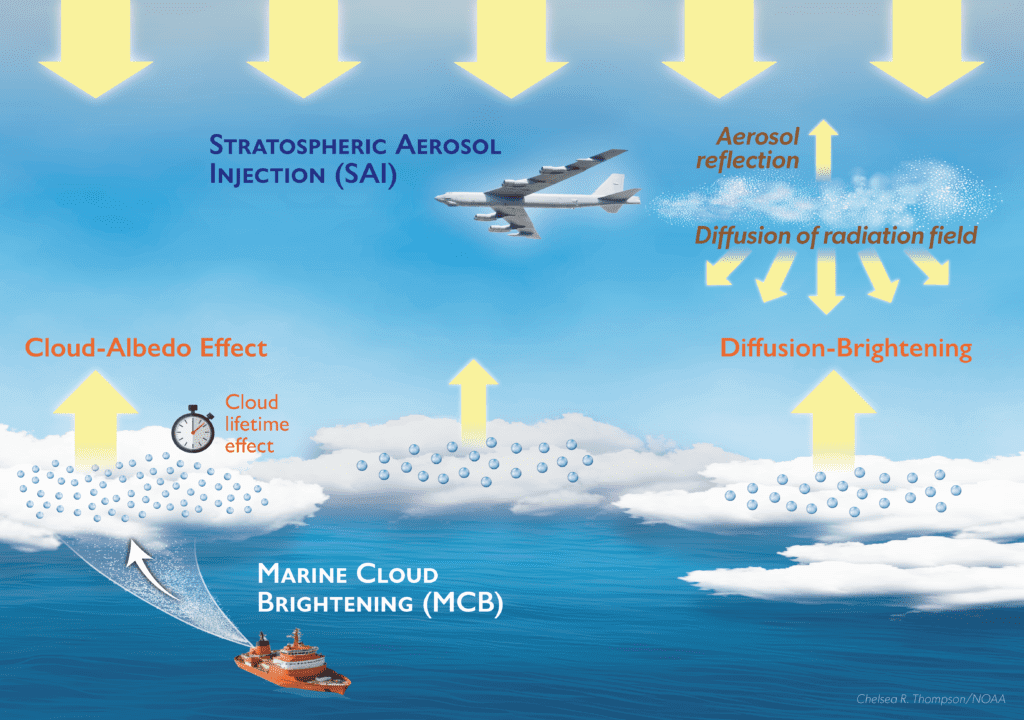
The Science Behind Solar Geoengineering
A consortium of international climate scientists has secured $66 million in funding for a comprehensive research program to study stratospheric aerosol injection (SAI), a proposed climate intervention technique that aims to cool the planet by reflecting a small percentage of incoming sunlight back into space. The project represents the largest investment to date in field experiments related to solar geoengineering.
The research builds on earlier work, including Harvard University's Stratospheric Controlled Perturbation Experiment (SCoPEx), which was canceled in March 2024 before it could conduct atmospheric tests. The new initiative aims to move beyond computer simulations to gather real-world data through a series of carefully controlled stratospheric experiments over remote ocean areas.
SAI works by introducing tiny reflective particles, typically sulfate aerosols or calcium carbonate, into the stratosphere approximately 20 kilometers above Earth's surface. These particles would scatter a small fraction of incoming sunlight back to space, theoretically cooling the planet in a manner similar to what occurs naturally after major volcanic eruptions.
"This research is purely investigative and designed to fill critical knowledge gaps," explained Dr. Eleanor Winters, the project's lead scientist. "We need to understand the physical and chemical processes that would occur if such an approach were ever deemed necessary. The goal is to provide policymakers with scientific data, not to advocate for deployment."
Experimental Design and Safety Protocols
Unlike previous smaller-scale proposals, this initiative includes plans for a series of incremental tests using specially designed high-altitude balloons. These balloons would release controlled amounts of calcium carbonate particles—measured in kilograms rather than the tons that would be required for actual climate intervention—into small, contained areas of the stratosphere.
The experiments will be conducted in phases, with each step requiring separate approval based on the results of the previous phase. Advanced monitoring systems will track the behavior of the particles, measuring how they disperse, interact with stratospheric gases, and affect incoming solar radiation.
Project scientists emphasize that the quantities involved are too small to have any measurable effect on global temperatures. The tests would create temporary "experimental volumes" in the stratosphere, approximately one kilometer long and 100 meters in diameter, that would dissipate within days or weeks.
Rigorous safety protocols include automatic termination procedures if unexpected results occur, independent monitoring by third-party scientists, and regular public data releases. No tests would be conducted over populated areas, and all experiments would comply with international air space regulations.
Controversy and Opposition
The project has faced vocal opposition from various groups, with some critics describing the approach as "barking mad" and potentially dangerous. Environmental organizations have expressed concern that even researching such technologies could reduce pressure for emissions reductions, a concept known as the "moral hazard" argument.
Indigenous groups, who successfully opposed earlier attempts to conduct similar experiments over their territories, have raised objections based on both practical and cultural considerations. "Deliberately altering the sky violates our relationship with the natural world," stated Tom Goldtooth of the Indigenous Environmental Network, which was instrumental in opposing the earlier Harvard SCoPEx project.
Some climate scientists also remain skeptical. Dr. Marcus Chen, who was not involved in the project, noted: "We don't fully understand the potential side effects, including impacts on regional precipitation patterns, ozone chemistry, and ecosystem responses to altered sunlight. The atmosphere is incredibly complex, and interventions could have unintended consequences."
Supporters counter that with climate change accelerating and emissions reductions falling short of targets, society needs to investigate all potential options. They point to recent studies suggesting that well-designed solar geoengineering could reduce some climate risks while research on permanent solutions continues.
Governance Questions
The project has spotlighted the lack of comprehensive international governance frameworks for solar geoengineering. No global body currently has clear authority to regulate such research or potential future deployment.
To address these concerns, the project includes funding for parallel research into governance structures, ethical considerations, and international cooperation mechanisms. An independent advisory committee comprising scientists, ethicists, policy experts, and representatives from potentially affected communities will provide ongoing oversight.
"The governance questions may be even more challenging than the technical ones," noted Dr. Sophia Rodriguez, an ethicist serving on the project's advisory board. "Who decides if such technologies should ever be deployed? How would benefits and risks be distributed globally? These questions need urgent attention regardless of whether the technology proves viable."
Looking Ahead
The project timeline extends over seven years, with initial atmospheric observations scheduled to begin in early 2026. Results will be published in peer-reviewed journals and made available through open-access platforms.
Scientists stress that this research should be viewed as a complement to—not a replacement for—aggressive emissions reductions. "Even if solar geoengineering proves technically feasible, it would at best be a temporary measure to buy time while we address the root causes of climate change," said Dr. Winters.
As the world grapples with the accelerating impacts of global warming, this controversial research program represents a pivotal moment in the debate over how far humanity should go in deliberately intervening in Earth's climate system.
Sources: This article was produced using information from scientific journals, university research programs, and news reports about stratospheric aerosol injection and solar geoengineering research. Details were gathered from publications by the Harvard University Solar Geoengineering Research Program, the Intergovernmental Panel on Climate Change assessments, and recent statements from scientific organizations and indigenous groups regarding geoengineering experiments. Additional information was sourced from peer-reviewed studies on stratospheric aerosol behavior and governance frameworks for climate intervention technologies.






